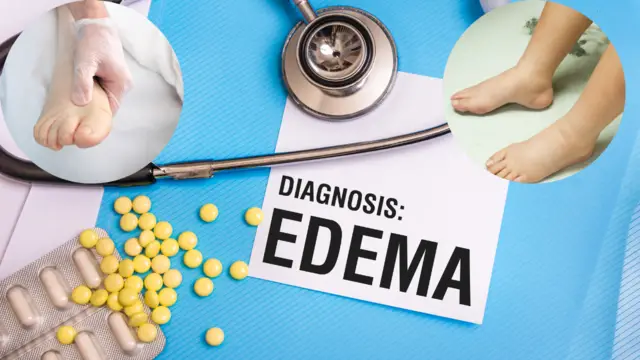Edema, a condition characterized by the abnormal accumulation of fluid within the body’s tissues, is a common yet often misunderstood health concern. From minor swelling in the ankles to more severe manifestations affecting vital organs, edema can have a significant impact on an individual’s quality of life. In this article, we delve into the intricacies of edema, exploring its causes, symptoms, diagnosis, and treatment options.
Understanding Edema
Edema occurs when excess fluid leaks from blood vessels into the surrounding tissues, leading to swelling and discomfort. This buildup of fluid can occur throughout the body, with common areas including the legs, feet, ankles, and hands. However, edema can also affect other regions such as the lungs, abdomen, and brain, posing serious health risks.
Causes of Edema
Numerous factors can contribute to the development of edema, ranging from lifestyle choices to underlying medical conditions. Some common causes include:
- Heart Failure: Inadequate pumping of the heart can lead to fluid retention in the legs, ankles, and abdomen.
- Kidney Disease: Impaired kidney function can result in fluid buildup due to the body’s inability to excrete waste and excess fluids.
- Liver Disease: Conditions such as cirrhosis can disrupt the liver’s ability to produce proteins needed to maintain fluid balance, leading to edema.
- Venous Insufficiency: Damage to the veins can hinder blood flow back to the heart, causing fluid to accumulate in the lower extremities.
- Pregnancy: Hormonal changes and increased pressure on blood vessels during pregnancy can cause swelling in the legs and feet.
- Medications: Certain medications, such as calcium channel blockers and nonsteroidal anti-inflammatory drugs (NSAIDs), can contribute to fluid retention.
Symptoms of Edema
The symptoms of edema vary depending on the underlying cause and the severity of the condition. Common signs and symptoms may include:
- Swelling or puffiness in the affected area
- Stretched or shiny skin
- Skin that retains a dimple or pit after being pressed for a few seconds (known as pitting edema)
- Increased abdominal size
- Difficulty breathing (in cases of pulmonary edema)
- Weight gain
– Decreased mobility or range of motion
Diagnosis and Treatment
Diagnosing edema often involves a thorough medical history review, physical examination, and diagnostic tests such as blood tests, urine tests, imaging studies (e.g., ultrasound, X-ray), and electrocardiography (ECG) for heart-related edema.
Treatment for edema aims to address the underlying cause while managing symptoms. Depending on the severity and cause of edema, treatment options may include:
- Lifestyle modifications: such as dietary changes, elevation of the affected limbs, and regular exercise to promote circulation.
- Medications: including diuretics to help the body eliminate excess fluid, and medications to treat underlying conditions such as heart failure or kidney disease.
- Compression therapy: using compression stockings or bandages to reduce swelling and improve circulation.
- Surgical interventions: in cases where edema is caused by structural issues or obstruction of blood flow, surgical procedures may be necessary to address the underlying problem.
Prevention
While some causes of edema may be unavoidable, there are steps individuals can take to reduce their risk and manage symptoms:
- Maintain a healthy weight and engage in regular physical activity to promote circulation.
- Elevate the legs periodically, especially when sitting or lying down for long periods.
- Limit salt intake, as excess sodium can contribute to fluid retention.
- Avoid prolonged standing or sitting in one position.
- Follow a balanced diet rich in fruits, vegetables, and whole grains, while limiting processed foods and alcohol consumption.
Conclusion
Edema is a complex condition that can arise from a variety of underlying causes, ranging from minor to life-threatening. By understanding the factors contributing to fluid accumulation and recognizing the signs and symptoms of edema, individuals can take proactive steps to manage their condition and improve their overall health and well-being. Early diagnosis and appropriate treatment are essential in addressing edema and preventing potential complications, highlighting the importance of regular medical evaluation and adherence to treatment plans.


